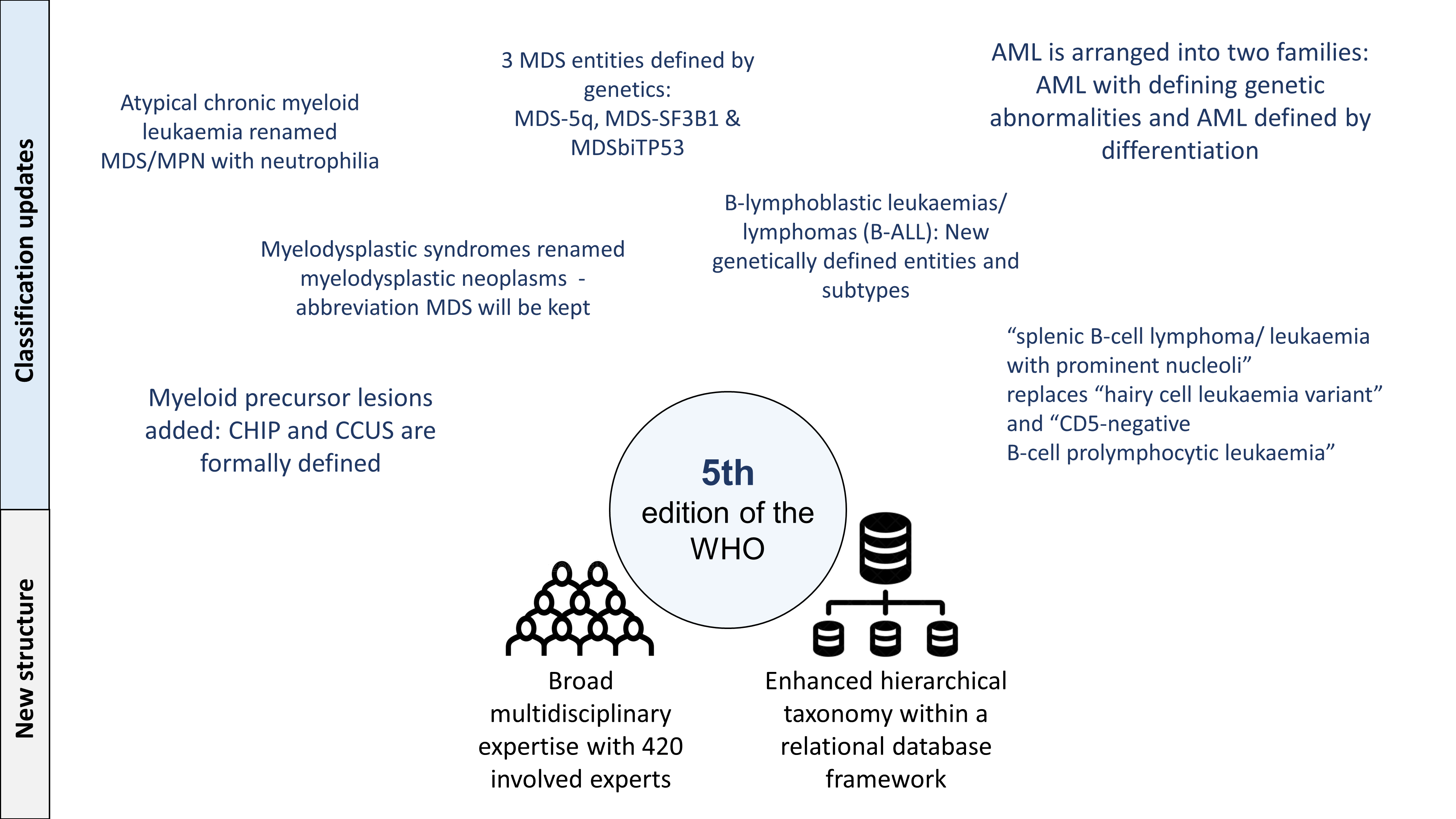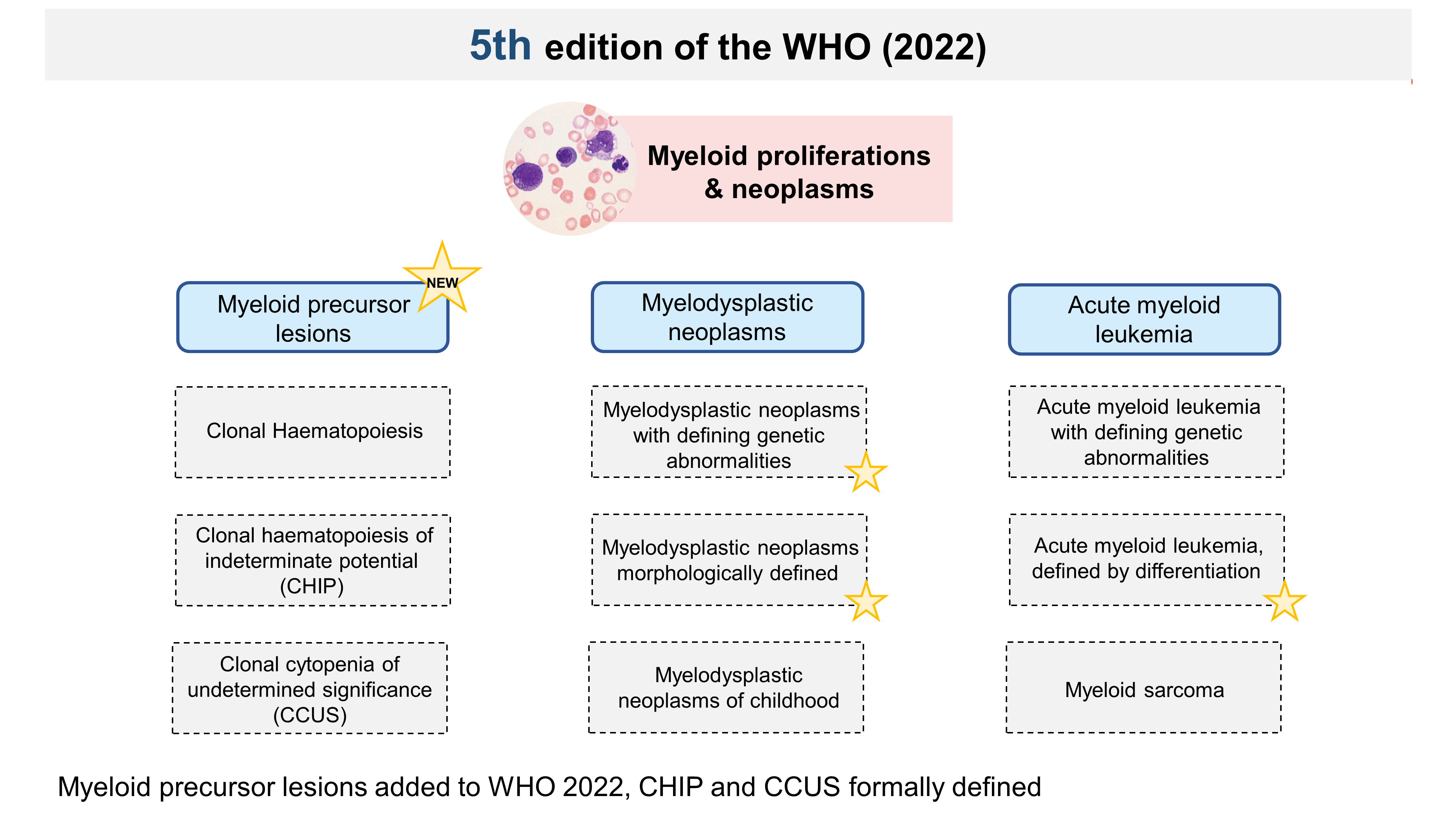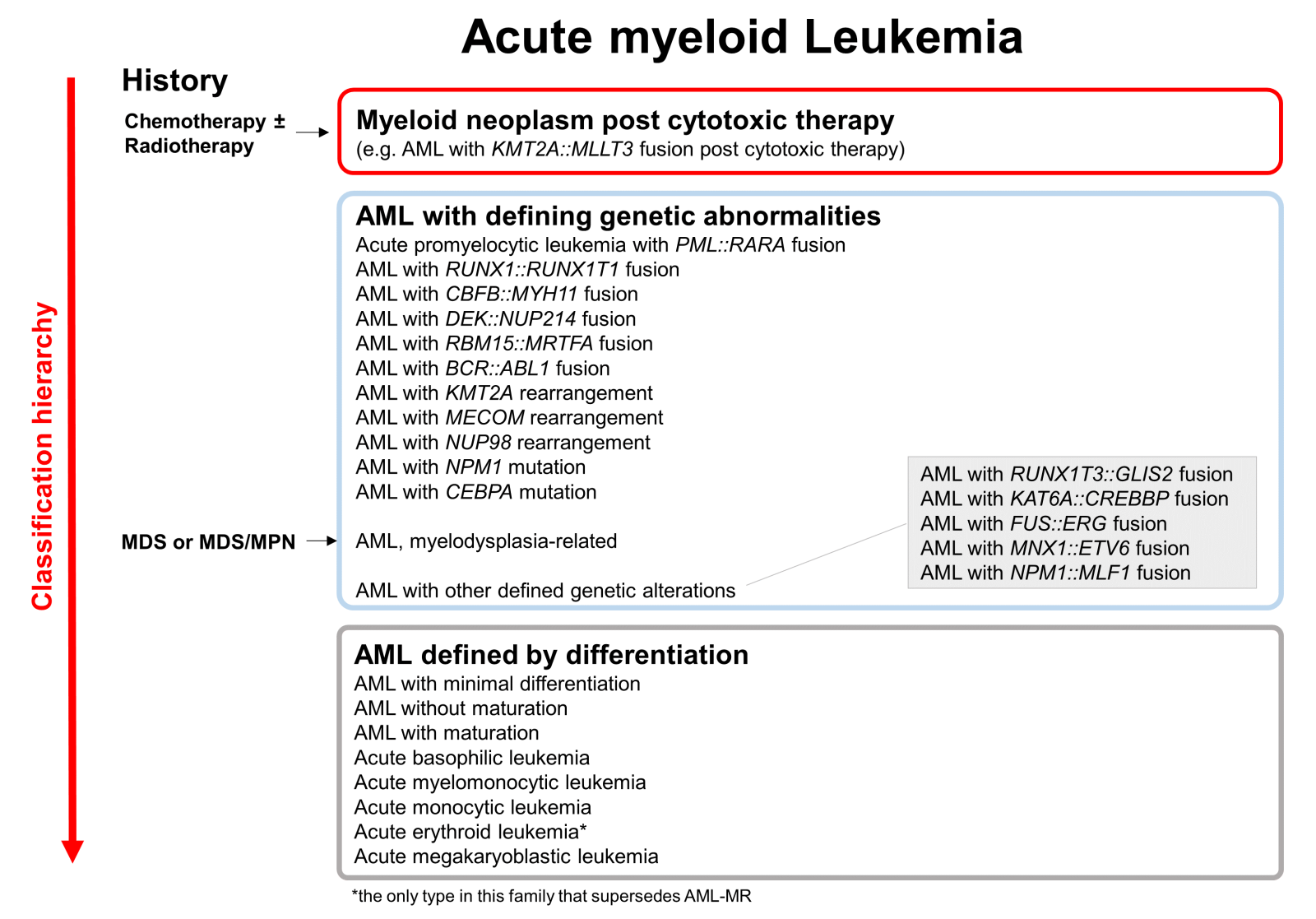The New WHO Classification – What to Expect
Five years have passed since the WHO classification of hematologic neoplasia was last updated. Since then, a great deal of knowledge has been gained – specifically in relation to genetic alterations. Each time the WHO classification is updated, purely morphological criteria recede more and more into the background, while genetic parameters have become increasingly relevant. MLL has been able to contribute its expertise to the new WHO classification. Prior to publication of the full classification, the major changes have already been presented in the journal Leukemia. An editorial (I.A. Cree, Leukemia 2022) outlines the process of recruiting the authors and creating the concept and content. The main innovations in the classification of myeloid (Khoury et al. Leukemia 2022) and lymphoid (Alaggio et al. Leukemia 2022) neoplasms, respectively, have been summarized in two publications. Meanwhile, the beta version of the full WHO book is also available online. We have extracted the most important information for you in short form.
The most important changes at a glance

News in myeloid proliferations & neoplasms

New: Precursor Lesions of Myeloid Neoplasia
In the myeloid neoplasia group, precursor lesions were included as entities for the first time: clonal hematopoiesis with a special definition of clonal hematopoiesis of indeterminate potential (CHIP) and clonal cytopenia of undetermined significance (CCUS) This has produced a globally uniform definition, which will allow better comparability for future studies.
Myelodysplastic Syndromes Are Now Myelodysplastic Neoplasia
Myelodysplastic syndrome has been renamed myelodysplastic neoplasia to make it clear in the name as well that it is a neoplasia and to harmonize with myeloproliferative neoplasia (still myeloproliferative diseases/syndromes in 2001) – however, the abbreviation MDS will be kept. MDS is further divided into two major groups: MDS with defining genetic abnormalities and MDS defined by morphology, whereby the morphological criteria have been standardized and the number of entities reduced.

Acute Myeloid Leukemia – Predominantly Genetically Defined
In acute myeloid leukemias, AML with defining genetic abnormalities are distinguished from AML defined by differentiation, which are classified based on morphology.The number of genetically defined entities has once again increased compared to the 2017 version. Genetic differentiation in myeloid/lymphoid neoplasia with eosinophilia has been refined as well.

Lymphoid Neoplasia Now Taking Genetics More into Account as Well
While genetic parameters are still not being used for classifying T-lymphoblastic leukemia, several new genetically defined subtypes have been added for B-lymphoblastic leukemia. The latest findings of transcriptome sequencing have already been taken into account here. It is therefore necessary to incorporate RNA sequencing in the routine diagnosis of B-cell line ALL. MLL will be proposing a diagnostic algorithm for this purpose. The vast majority of lymphoma entities continue to be defined histologically and by their immunophenotype.
MLL is currently making all of the preparations necessary for diagnosing according to the new WHO classification. It helps that, for each entity, both the essential as well as the desirable diagnostic criteria have been defined very specifically by the WHO. As soon as the 5th edition of the WHO classification is published in its entirety as an online book – probably in fall 2022 – we will also implement it in our diagnostic reports. To make the transition as easy as possible for all of us, we will be holding several training sessions on this topic. The first seminar will be held on 07/27/2022, 4:00 - 6:00 p.m. on site at MLL. Participating virtually will be possible as well. We will also provide detailed information about the new WHO classification on our mll.com website.
As far as we are concerned, the update of the WHO classification represents a major step forward, as this makes a more detailed biological definition of the entities possible, taking into account the genetic parameters. This is the most important prerequisite for personalized medicine.
References
Alaggio R et al. The 5th edition of the World Health Organization Classification of Haematolymphoid Tumours: Lymphoid Neoplasms. Leukemia 2022.
Khoury JD et al. The 5th edition of the World Health Organization Classification of Haematolymphoid Tumours: Myeloid and Histiocytic/Dendritic Neoplasms. Leukemia 2022.
Khoury et al. The 5th edition of the World Health Organization Classification of Haematolymphoid Tumours: Myeloid and Histiocytic/Dendritic Neoplasms.
Leukemia 2022
DownloadAlaggio et al. The 5th edition of the World Health Organization Classification of Haematolymphoid Tumours: Lymphoid Neoplasms.
Leukemia 2022
DownloadThe authors

»Do you have questions regarding this article or do you need further information? Please send me an e-mail.«
Prof. Dr. med. Claudia Haferlach
Executive management
Medical doctor
Department manager Diagnostics
claudia.haferlach@mll.com

»Do you have questions regarding this article or do you need further information? Please send me an e-mail.«
Prof. Dr. med. Dr. phil. Torsten Haferlach
Executive management
Internist, Hematologist and Oncologist
Deputy Head of Cytomorphology
torsten.haferlach@mll.com